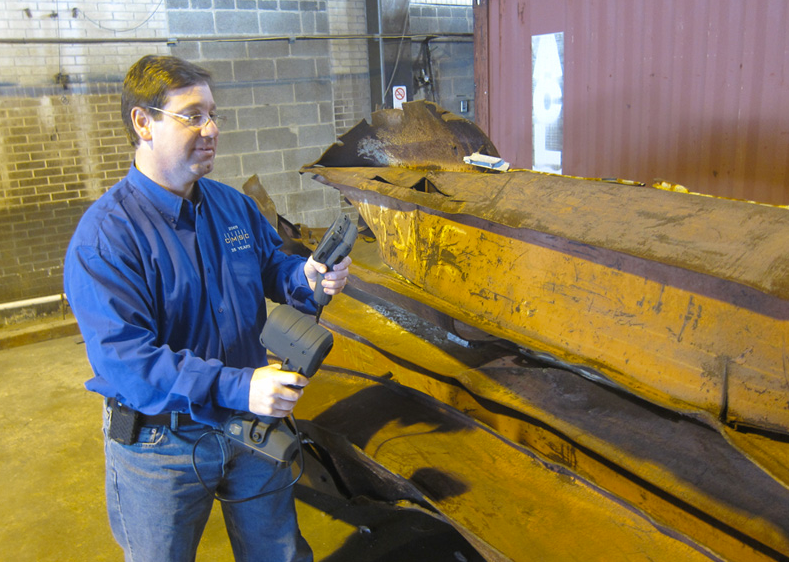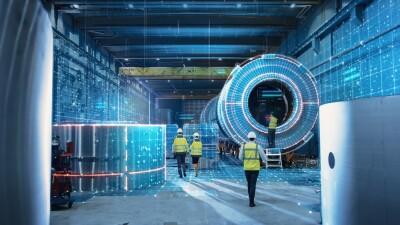This week, Mantis Vision will be touting its handheld 3D camera for the forensics market, as part of the 11th International Police Workshop on Photogrammetry, Laser Scanning and Terrestrial Technologies, being held in Dusseldorf, Germany. Mantis, an Israeli technology firm, will be demonstrating its new F5 imager for public evaluation and review and Tom Greaves is in attendance and should be able to get a peek at what they’re up to. Though the company has been developing technology for the defense and security industries since 2005, it has just this week launched its web site and only recently began serious commercial marketing efforts of its products in North America.
We here at SPAR have been following Mantis for a little while. Shabtay Negry, Mantis VP, spoke at SPAR Europe in 2010 and we know Direct Dimensions has been marketing the F5 since the spring of this year, because it announced a reseller agreement with the company at SPAR International.
At the International Police Workshop, Mantis is unveiling the results of a case study conducted with the Dutch Police over the course of the last 12 months. According to Mantis, “Holland’s KLPD, in collaboration with Netherlands Forensic Institute and the Rotterdam Police Department, conducted a review and evaluation of 3D scanners for crime scene investigation.
“The project included two phases: Product comparison and product evaluation. F5 was selected as the preferred product and for the last seven months was rigorously used in the field by forensic experts.”
The KLPD will be presenting in Dusseldorf their perspectives on using the F5 for crime scene investigation. Mantis will then follow up with its 18-month road-map, according to the press release.
It looks like they have a better feel for that 18-month roadmap because they’ve secured some financing (they were openly looking for $4 to $6 million earlier this year). Earlier this month, the Israel-US Binational Industrial Research and Development Foundation announced funding for Mantis and Direct Dimensions to develop a 3D imaging system for facilities’ measurements. The exact funding amount wasn’t announced, but there was $8.1 million made available for nine projects, of which Mantis, also now a portfolio company of Jerusalem Technology Investments, and Direct were one.
In the company’s specifications for the F5, the product is touted as needing no scene preparations, such as survey targets, yet can get accuracy to .5 mm at a range of roughly one meter. It is described as being similar in operation to a normal 2D video camera, yet operates in total darkness and emits no visible light. Data is downloaded from the unit and processed with Mantis Vision Production software, which outputs 3D videos where each frame contains some 50,000 measurable points. The point clouds are then stitched together to form a denser point cloud of the entire scanned scene.
If everything works as promised (Direct Dimensions’ Michael Rafael is very high on the product, but, then, he’s reselling it…), it’s pretty easy to see the applications for crime scene investigation and other small indoor and outdoor scanning projects. It’s not going to replace a terrestrial scanner for most industrial applications, but it seems like it could be a great bridge between hand-held laser scanners that are typically used for reverse engineering applications and tripod scanners that might be overkill for some situations, and might be ineffective in others where there’s a lot of clutter that you can’t see behind. I’d think walking around with the 3D camera would be a lot more effective than setting up 20 scan stations.
Here’s a brief video showing you how the system works:






